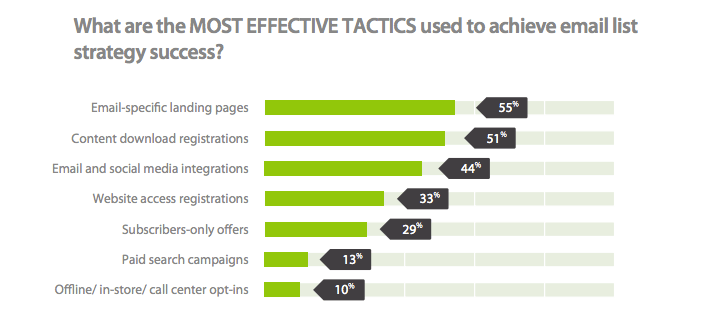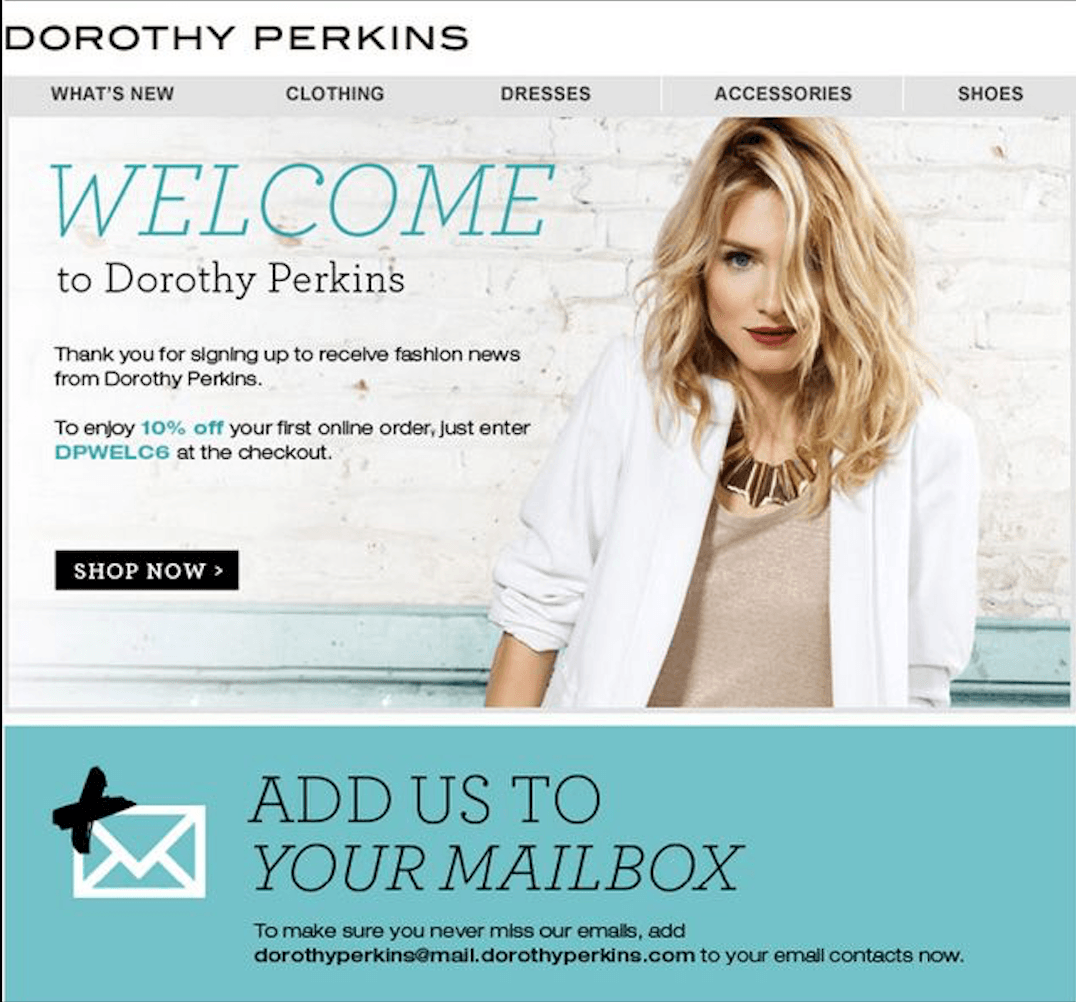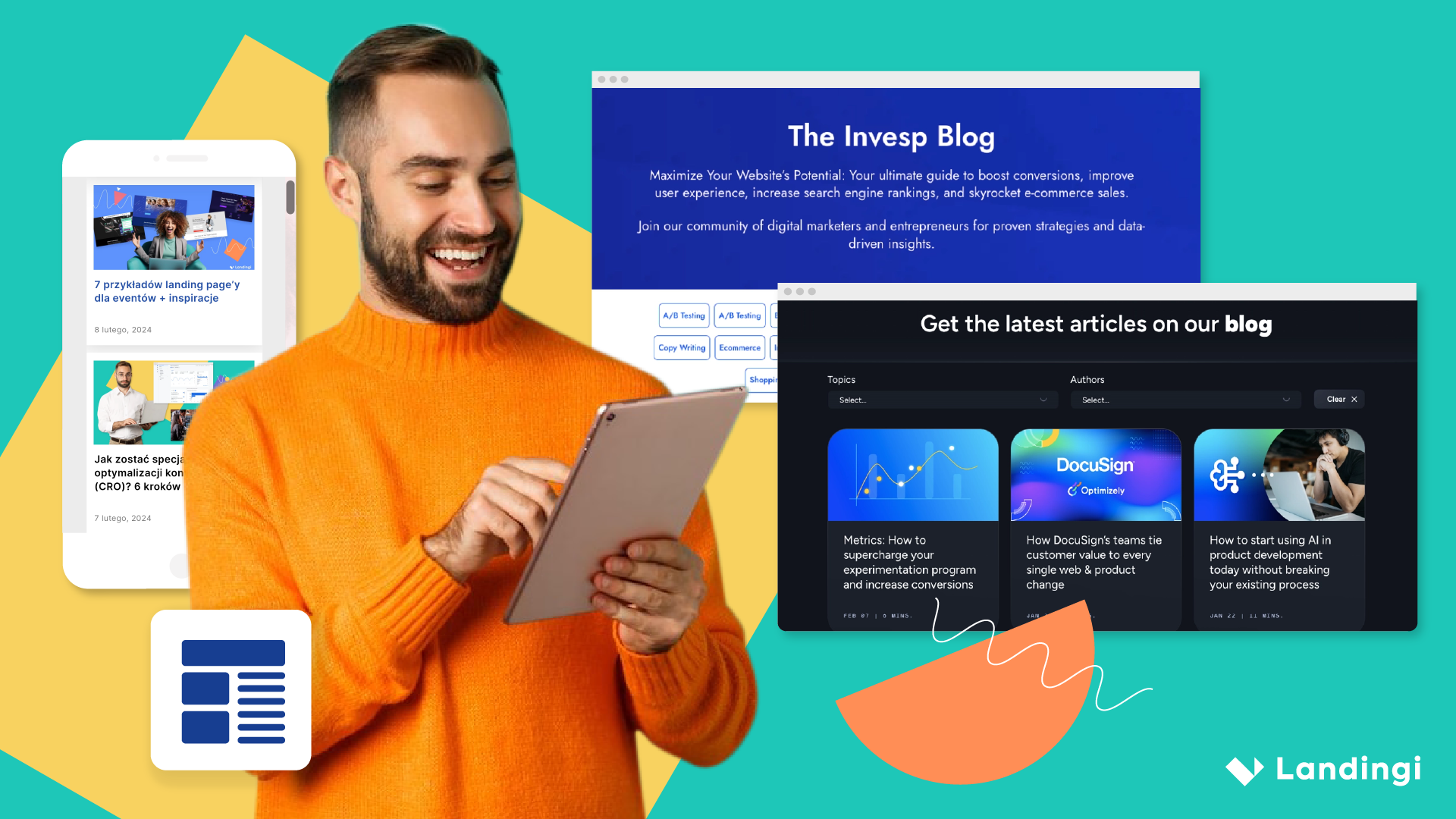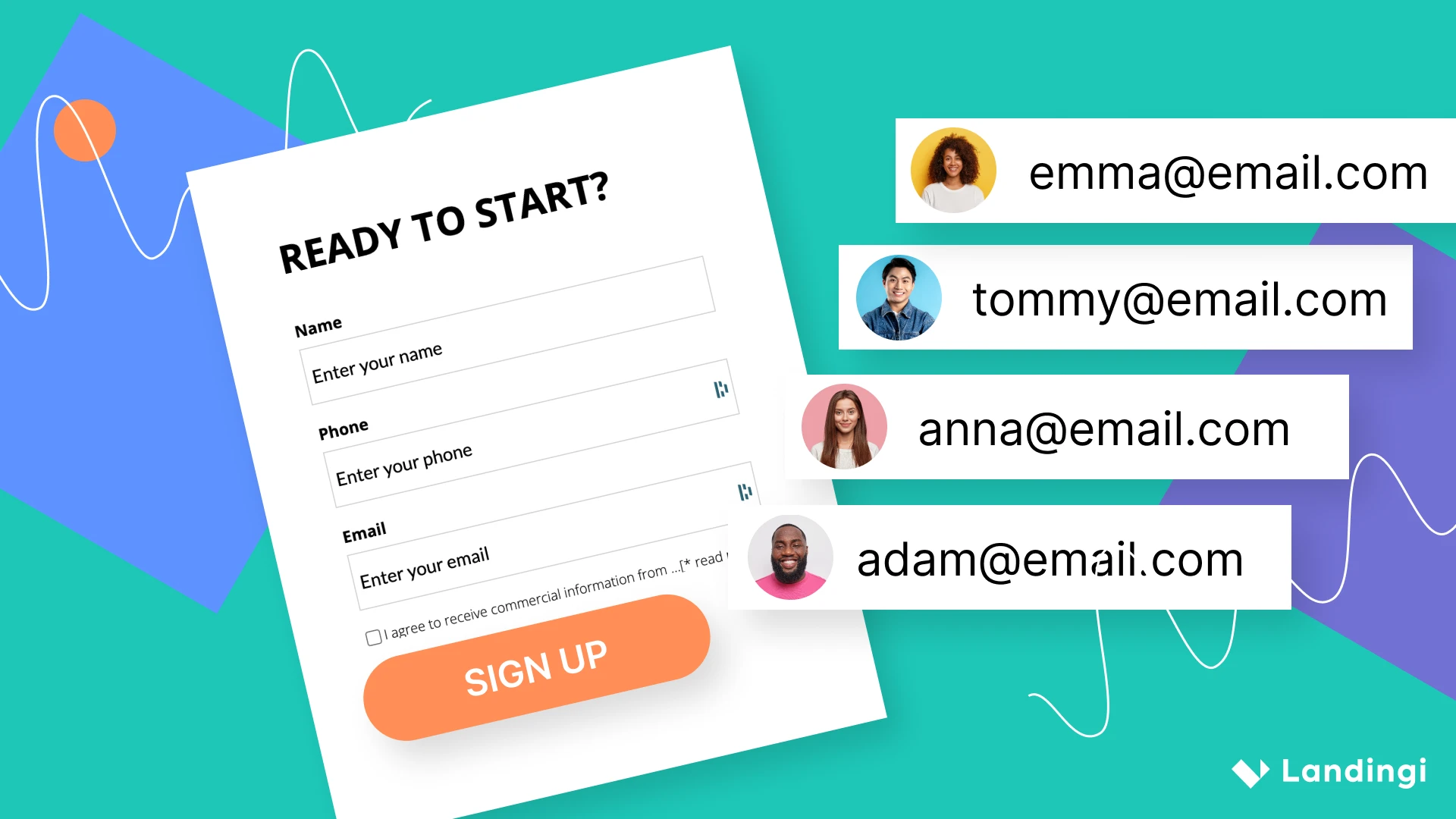Your company is growing and it’s harder for you to maintain personalized communication with potential customers? Hiring another specialist to do it from scratch is not an effective method of managing the brand and increasing sales. Maybe it’s time to think about marketing automation for an adequate lead generation. To do that capably, you first have to understand your customers – their motivations and needs.
By definition, marketing automation is a series of marketing operations made with the help of a special software and tools designed for aiding sales processes. According to Email Monday, 51% of companies currently use marketing automation tools and half of the B2B companies (58%) plan to use this client-reaching method.
This text will show you how to start marketing automation operations, starting with the beginning of a marketing and sales funnel. This means lead generation from landing pages and an e-mail marketing platform. Your constantly expanding e-mail list is the best way to increase sales, thanks to targeting the specific recipients with tailored communication.
Make your sections smartable and let go of mundane manual tasks with Smart Sections! An easy way to manage bulk changes.
What is marketing automation?
This comprehensive idea is an umbrella for every type of action (or a mix of them) you can take on your path to promoting your product or service. Starting with e-mail campaigns, through drip e-mail marketing and autoresponders, ending with social media interactions, SMS messaging, paid campaigns and lead nurturing; which is in many cases the domain of a sales team. They just pick up the phone and contact a previously prepared, “hot” lead.
Source: Reachmarketing.com
The main advantage of marketing automation is the automatic gathering and processing of data about your customers in the place of its manual attendance and analytics. Most marketing automation campaigns are based on channeling a personalized message through e-mails. That’s why e-mail marketing and your own e-mail list plays a key role in marketing automation.
How to start marketing automation?
To start marketing automation operations, you don’t have to buy expensive software. Most e-mail marketing systems will allow you to create a behemoth, offering integrations with popular tools like Google Analytics, lead generator, SMS senders, social media platforms, CRM systems or ERP systems.
Your basic goals should be a constant building of your own e-mail list. This will be a ‘storage space’ for people that trusted you enough to leave their e-mail for further contact purposes. With this list, you can discover users’ preferences, personal information (for example age, sex, etc.) and especially all the things that they are interested in on your website. Based on all this information, you can create tailored e-mail communication strategies. Content from e-mail campaigns can be mixed with other actions, paid or social, creating automated and personalized marketing campaigns.
Why should you build your own e-mail list?
Roughly 2% of website visitors will make a purchase during a particular session. The other 98% will leave the site, not taking any kind of action. This is a great missed opportunity that begs for converting visitors into marketing leads. You can make this happen by putting a newsletter sign-up on your page.
By analyzing data from e-mail campaigns and comparing them with data from other marketing operations, you will know your users and gain the trust needed for making a purchase in your store and nowhere else.
Your e-mail list will stay your property forever. You have control over subscribers, more than you have over social media fans or Google users. Not only is organic range dropping, but also users are becoming distrustful of content catered to them by brands. All this leads to dire straits for branded content being noticed.
The biggest advantage of your list is the voluntary aspect of it. People just want to stay in touch, use it. If you steer communication in the right direction, it will hit individuals interested in it, and that means profits for your company.
Good practices for your list
Gather necessary legal agreements
May 2018 is the start of a new European Parlament law regarding safety of personal data, called General Data Protection Regulation (GDPR). That means strict rules regarding gathering and processing. The most important part in GDPR is the user agreement when it comes to signing up for something. Agreements must be:
- open
- conscious
- voluntary
- confirmed
Sound scary? Not necessarily. It’s enough that the process of gathering agreements is clear for the user. You cannot bury information in the terms of use or pre-check the check boxes that a user must click before final confirmation.
While gathering users for a newsletter, it’s enough to check in your mailing system the option for double opt-in sign-up. This means sending a message with an activation link and a request for confirmation during the sign-up process. You can sign a user up for a newsletter only when he clicks the activation link.
For more on how to get ready for GDPR, you can read about it on Computer World’s page. Also, wait for our original, special content on the topic.
Take advantage of your best content
Think about e-mail gathering in the context of a barter exchange. Internet users will gladly give you their data if they receive the promise of interesting and valuable content. No one wants to sign up for boring sales offers.
An easy way to verify content that is most popular among your visitors is the traffic under Google Analytics. Log into the panel and click:
Behaviour -> Page content -> All web pages
You will find the list of most visited subpages on your page and here you can place your newsletter sign-up button.
Good form for a newsletter sign-up:
- it’s easily visible
- doesn’t distract the user from making purchases
- it has a visible closing button on a pop-up and has capping set in the right way (one display per one user)
- is optimized for mobile devices
Not breathing content marketing? It’s worth considering, but first, let’s talk about something else…
Create a landing page optimized for sign-up
Build your e-mail base by designing a landing page optimized for sign-up. It’s the most effective method for gathering e-mail addresses from people interested in your newsletter.

Source: Adestra.com
On a specifically designed landing page, you have more space for highlighting the benefits of signing up and asking a potential subscriber for more information than just a name or an e-mail address. Marketing automation is about people after all, so the more information you gather during the sign-up, the more precise the mailing will be.
When creating an optimized landing page, it’s good to remember a few rules that translate directly to higher conversion:
The right CTA
One, and only one, CTA box on a landing page. Make sure it’s visible and a message is put on the button that really attracts people to take a certain action. It has to be constructed in a way that the message is clear for the user and he knows what happens when he hits the button. Avoid using words such as “click here” or “sign-up”. Communicate the benefit while using simple language.
Write good copy
Information displayed on your landing page should be plainly written and perfectly aligned with messages that the user will recieve in an e-mail. Let’s say your landing page says “Download an e-book and get a discount”. Your first e-mail should repeat the same discount offer and deliver on a promise – the ability to download an e-book.
Create a good design
Your landing page design should be clean and direct the user’s attention toward a CTA button. It would be ideal if the button would be placed in an F-pattern area – we read from left to right, after all. The user’s sight automatically travels to the area where conversion should take place. Everything from fonts and elements on the page to multimedia will have a say in the effectiveness of gaining subscribers.

F-pattern. Source: NNGroup.com
Prepare a good welcoming mail
While building a good mailing list, remember about greeting and thanking a new subscriber for the decision to join your list. Subscribers that receive welcoming mail tend to have a 33% higher engagement rate in the further communication process with the brand and therefore in all the remaining marketing automation actions you want to perform.
A good welcoming mail sent immediately after sign-up, when you’re the center of attention for a new subscriber, will help you build a good future relationship. This mailing is a good place for:
- talking about the nature of the content and shipping frequency
- an invitation to the preference center where a subscriber can personalize the content (you’ll have more data that way)
- adding instructions on how to add your address to contacts to gain the status of “trusted sender” and ensure that your e-mails won’t land in the “spam” folder
- adding further information valuable for future communications, like new offers, brand presentation, social media links and contact information.

Automate further communication with subscribers
You just gained a new subscriber. Maybe he is still browsing your page while having the greeting e-mail opened. He just found out that he has a discount on his first purchase. He converted from an e-mail to your e-shop page, but maybe he decides to not make a purchase. Did you just lose the customer? No. Your mailing system will soon send him a mailing with products he browsed for.
What if he didn’t open the greeting mail? Based on data from campaign reports you can automatically build a further communication with different kinds of content – promotional or educational. You can also send an e-mail with a time-limited discount. This is just an example of what you can do with autoresponders. Marketing automation doesn’t have to be hard and with the proper tools, you can launch it regardless of your company’s size.
Individualized experiences interacting with a brand are fairly easily attainable in e-mail marketing. By creating targeted messaging through which everyone will feel unique and important, you will achieve your goals. Prepare actions and a clear path for communication by using e-mails and other channels that you will integrate and plan for in your campaigns using marketing automation.
I have landing page leads. Now what?
You have created a campaign with landing pages, a high number of page views turned into leads. What to do now? Send an e-mail, call? There are better ways to interest potential customers with your offer. They are:
- following campaigns,
- segmentation,
- lead nurturing.
Following campaigns
If you know that a customer has given their e-mail address already exists in the base and bought something, sell him a similar product. You can send him a newsletter with an offer regarding products from the same genre (movies), material (clothes) or in a similar price range (same product category, similar price range).
With cookies, you can also identify the user and show him similar offers from a catalog (famous “others interested in this product also bought…”)
Segmentation
Discover what your customer’s needs are and prepare a personalized offer. After a completed sale you can send an e-mail with a short questionnaire regarding the quality of service. Some questions may pique interest in similar products or be framed in a similar way:
We’ve discovered you bought an ABC product. Do you believe you gained enough information about this product? Would you be interested in receiving information about products DEF and XYZ as well?
Lead nurturing
Some left you an e-mail or a phone number? That doesn’t mean that he or she trusts you. Show that you’re an expert in your field. Like the classic rule of commerce says, “Sales without nurturing is like proposing on a first date”.
If the customers don’t know what he wants, let him grow. If he knows exactly what he knows but didn’t take the steps leading to a sale, let him grow as well. It’s rare for a customer to spend money right away, in the first shop he came across. Building relations with the customers is more important than ever because it can result in (and usually is) long-term relationship, often on the basic level, like acknowledging company’s logo. A good example is Internet auctions, where a customer can browse thousands of similar offers with very similar prices. Finally, he decides to buy from a vendor with a familiar logo, even if the price or shipping cost is a little bit higher. Customer pays for a psychological comfort that the product will be delivered on time and in a good condition.
Summary
According to a joined Hubspot and LinkedIn study, 41% of companies don’t build so-called client personas. In other words, almost half of them don’t know who their customer really is. What he’s buying, what are his buying habits, etc. 40% of marketers don’t know what is a qualified lead. 59% of them don’t share a clear segregation of duties with sales department.
All of this generates:
- burning money for nothing,
- inability from brands to reach customers with personalized offers,
- relations, not relationships.
It’s worth looking at the last point. Psychologists often emphasize on teens not wanted to engage with others. What they want are relations, not relationships. Teens wish for contacts to be quick, skin-deep and not based on the more profound knowledge about the other person. It’s similar to brands. Marketers want to sell a product, period. They should understand the person buying the product, instead.







